This 'How To Abseil' article is part of the book - Trad Climbing Basics.

Abseiling (or rappelling) is a simple method of descending ropes that gets you back to the ground quickly.
You can walk down from the top of many climbs, but if that isn't an option, you'll have to abseil.

How To Abseil: Check the Anchor
In most situations, there will be a fixed abseil point (such as two equalized bolts or some slings around a tree). This anchor must be bomber. Check the bolts, webbing or cord carefully. If the anchor fails, you will most likely die, so be prepared to replace it.
A bolted abseil anchor should have two bolts of 3/8” diameter or thicker, which are well placed in solid rock. Inspect the rings or maillons too. If they are rusty or have a groove worn in them, consider backing them up with a carabiner.
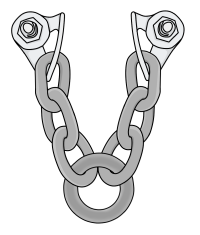
Closely inspect anchors made with webbing or cord, especially around the back of the feature. Slings which have been in place for years may be stiff or faded – signs that they have been severely weakened by ultraviolet radiation. Animals sometimes chew webbing too, so check thoroughly. If in doubt, add to it or replace it with webbing, cord or slings of your own.
Some anchors in seldom-climbed areas may be missing a ring or carabiner at the central point. In this case, you’ll need to add one of your own.

The rope should not run directly over nylon slings or cord. Nylon on nylon generates tremendous friction. When you pull your ropes, they will cut into the abseil slings, leaving them dangerously weak for the next team. For the same reason, you should never be lowered from an anchor this way. Your rope will probably cut through the slings before you reach the ground.
Always make sure your ropes are attached to the anchor with metal. Two carabiners with gates opposite and opposed works well.
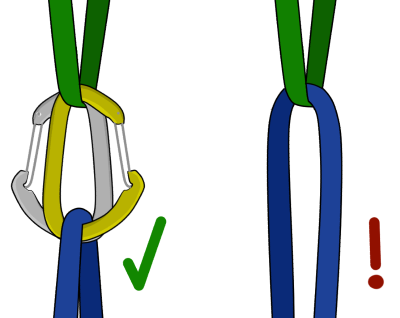
How To Abseil: Attaching to the Anchor
The entire climbing team should attach to the anchor while rigging abseils. A common way of doing this is to girth hitch a short sling through your belay loop and clip it to the anchor with a screwgate.
On bolted abseil anchors where the two bolts aren't joined together, you can use two slings with separate screwgates. Attach one sling to each bolt.
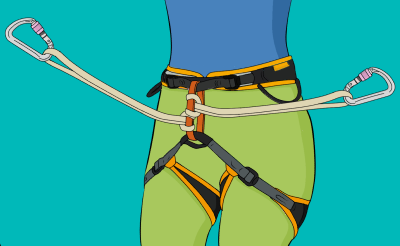
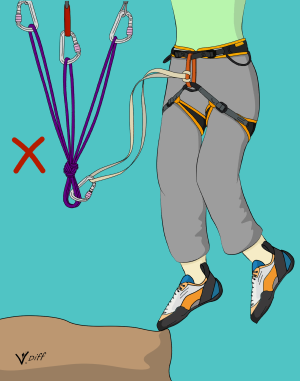
Warning
Make sure not to climb above the anchor when attached only with a sling. High forces are generated if you 'static' fall (without a rope in the system) the full length of your sling which may damage or break it. Learn more.
How To Abseil: Tying the Ropes Together
You can abseil with either one rope or two. Whichever you use, you'll need to get the middle of your total length of rope onto the anchor.
If you're using one rope to abseil, feed one end through the abseil point. Then holding both rope ends together, pull the ropes through until the mid-point of the rope is at the abseil point. Some ropes have a 'middle marker' to make this easier.
If you are using two ropes, you'll need to tie them together. A simple and safe way to do this is to use the overhand knot described below.
Step 1
Thread the end of one rope through the anchor.
Then hold one end of each rope together and make a loop at least 60cm from the end.

Step 2
Put the ends through the loop to make an overhand knot.
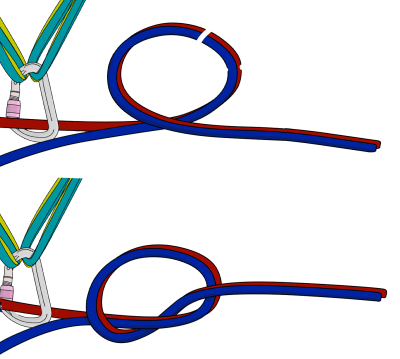
Step 3
Pull each strand of rope very tight on either side of the knot, making sure the knot is neat.
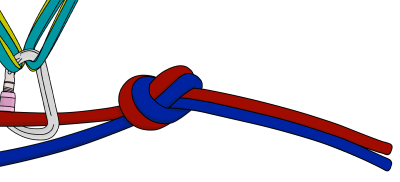
Step 4
Back it up with another overhand knot immediately next to it. Pull that tight too.
You should have at least 30cm of rope left after the knots.
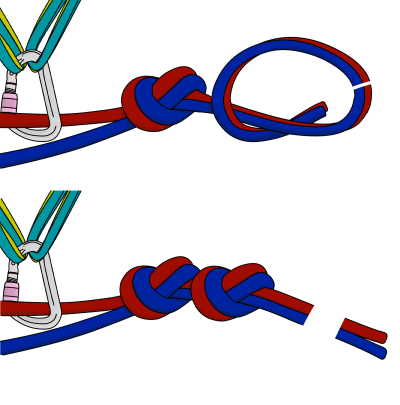
How To Abseil: Throwing Ropes
You should throw your ropes down in a way that they are unlikely to get tangled together or stuck on something. The following is a simple method of reducing your chances of a stuck rope.
Step 1
Tie knots (such as the triple barrel or overhand) in the bottom end of both strands of rope. This stops you from accidentally abseiling off the end.
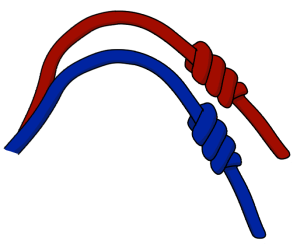
Step 2
Prepare to throw the ropes down. It's better to do this one rope at a time. Starting from the end, stack one rope in coils over your arm.
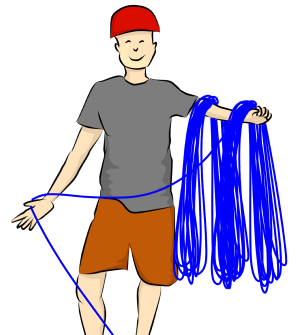
Step 3
Shout ‘rope’ to anyone who may be in the area below. When you are certain that no-one could get hit by your ropes, you can throw them.
Take the first half of the coils in one hand and the second half in your other hand. Throw the second half of the coils down, closely followed by the first. Keep an eye on the ropes at the anchor. With all the weight on one side, the rope could zip through the anchor at this point.

Step 4
Stack the other rope and throw it down in the same way. If there are climbers below, either wait for them to finish climbing, or ask them if you can slowly lower the ends of your ropes down. This may cause your ropes to snag on features, but will be much less dangerous for the person leading up.
How To Abseil: Attaching your Belay Device
Note: The following description explains the basic method of how to attach a belay device for abseiling. For many abseils, it is recommended to extend your belay device to add further security.
Step 1
Clip your belay device to your belay loop with a screwgate (don’t lock it yet).
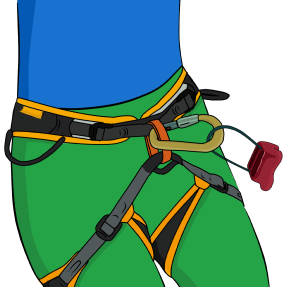
Step 2
Pull up about a meter of both strands of rope.
It will be heavy, so have your partner hold the rope up, or step on it to create slack so it’s easier to clip in.
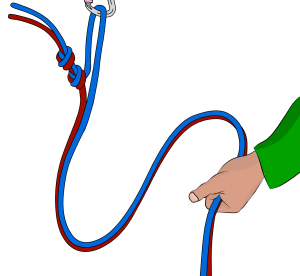
Step 3
Push the ropes through your belay device making sure it is orientated the correct way up.
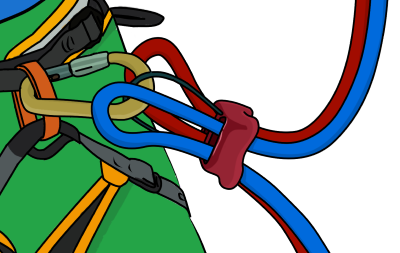
Step 4
Clip both of the ropes and your belay device through the screwgate carabiner and fasten it.
You don't need to remove the screwgate from your belay loop when doing this; you are more likely to drop it if you do.
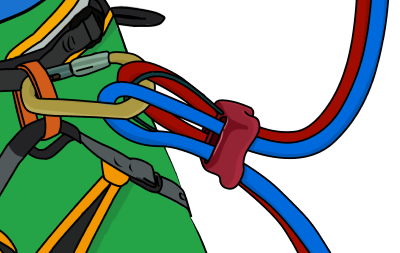
Step 5
Lean into the anchor and pull any slack rope through your belay device.
Then holding the ropes in the lock-off position, sit back and apply your weight to the belay device. This allows you to easily check the setup.
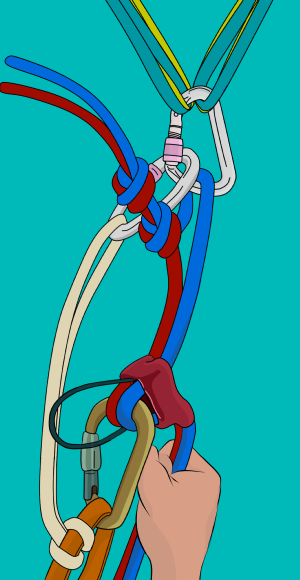
Using a Prusik Knot
For most abseils, it's wise to backup with a prusik knot. A correctly tied prusik will autolock if you let go of the ropes.
Step 1
Wrap the prusik around both ropes a few times and then clip the ends together with a screwgate carabiner. More wraps will create more friction around the ropes, though four wraps are generally enough. Pull the knot tight, make sure it is neat and the double fisherman’s bend is away from the ropes.
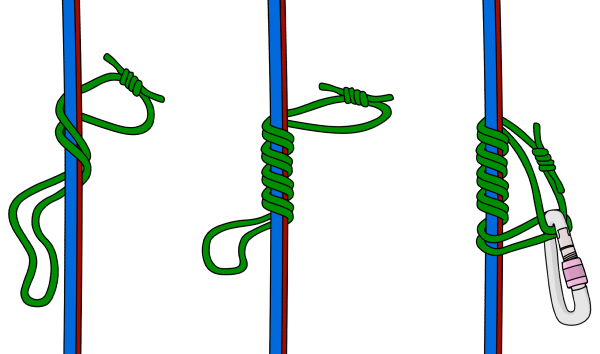
Step 2
Clip the prusik to your leg loop. The prusik will slide down the ropes if you hold it close to your leg loop and lock around the ropes if you let go. Test this before you abseil.
If it doesn't lock, take it off and re-tie it with an extra wrap around the ropes.
If your prusik loop is too long, it's possible that it could jam into your belay device during the abseil. If this happens, it can be difficult to control your descent. To avoid this, you can extend your belay device with a sling.
How To Abseil: The Descent
Before you unclip your attachment point from the anchor, check:
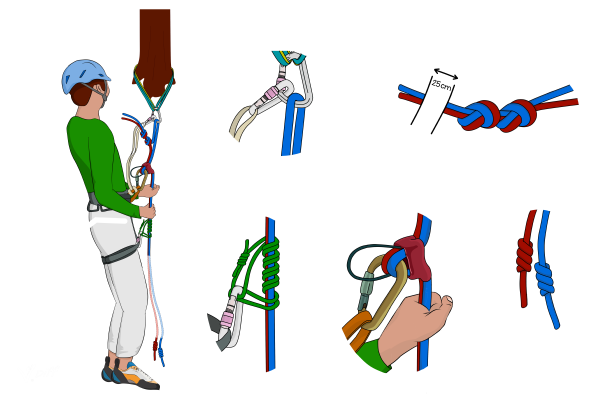
Step 1
With one hand holding both ropes in the lock-off position, unclip your sling from the anchor and clip it out of the way on the back of your harness.
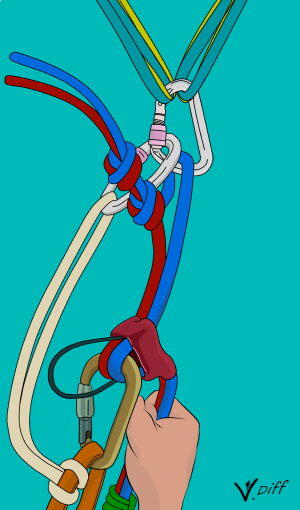
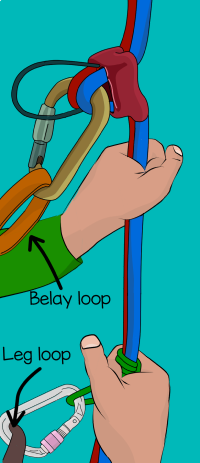
Step 2
Put your second hand over the prusik. Your hands should be in the same position as they would to lower a climber while belaying.
Step 3
While keeping a firm grip, lean your weight back and allow some rope to go through your belay device, remembering to slide the prusik down as you go.
Continue feeding rope through as you lower yourself down. You'll soon be able to figure out how fast to feed the rope while staying in control.
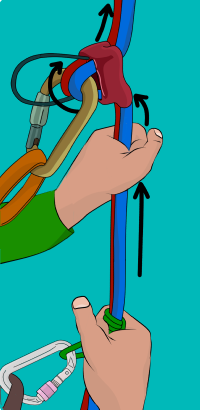
Step 4
Sit back in your harness and keep your body in an L shape with your feet wide apart. Walk backwards down the rock, making sure to look behind to see where you're going.
Move smoothly down the ropes. Don’t bounce, jump or swing around – this puts much more force on the anchor and is likely to damage your ropes if they pass over rough edges.
To abseil past a roof, plant your feet on the lip and lower your body down. Once your body is below the roof, cut your feet loose to avoid hitting your head.
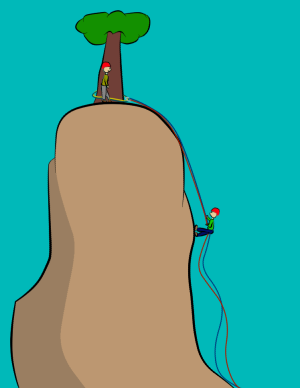
Step 5
If you are the first in your group to abseil, you may have to deal with tangles of rope hung up on ledges, flakes or in bushes.
Always deal with tangles when still above them. Lock off the rope with your prusik and pull the rope up to unfasten the tangle or flip the rope free of the snag.
When you're safely attached to the next anchor (remember to inspect it first) or on the ground, remove your belay device and prusik and shout up to your partner that you're 'off rope', so they can begin abseiling.

Step 6
When everyone is down, you can retrieve the ropes. Unfasten the knots from the ends of the ropes and pull down on the rope that you didn't thread through the anchor.
Keep an eye on the other rope as you do this to make sure it doesn't go up with a mysterious auto-knot fastened in it.
When the ropes are about to fall down, shout ‘rope’ to warn your partner(s). Be aware that the falling rope may bring down loose rock with it.
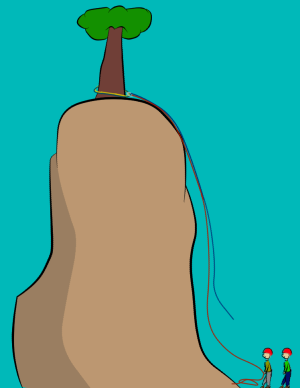
The Fireman's Belay
If a less experienced climber is worried they may not be able to control the abseil, they can be given a fireman’s belay.
The more experienced climber descends first, then holds the ropes while the other climber descends. A simple pull on the ropes will lock their device.
This is also useful if one climber has forgotten their prusik – they can abseil last with a fireman’s backup.
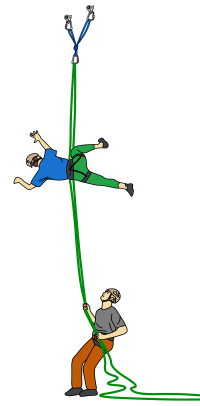
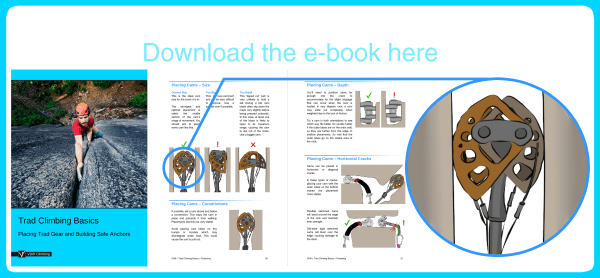





One thought on “How To Abseil”
Comments are closed.